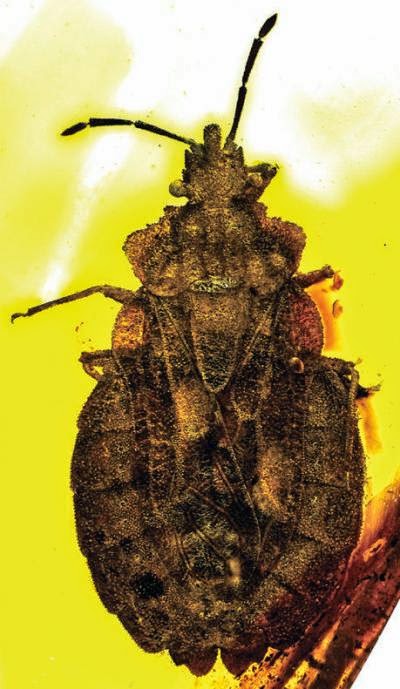
Baltic amber deposits reveal a new species of flat bug from the genus Aradus
A piece of Eocene Baltic Amber of about 45 million years age contains a well preserved extinct flat bug, which turned out to be a new species to science. This exciting discovery is one of the many secrets that deposits of Baltic amber have revealed in the last years and are yet to come in the future. The study describing the new species was published in the open access journal Deutsche Entomologische Zeitschrift.
The new species Aradus macrosomus is a rather large representative of the genus, differing by its size and particular structures from its congeners. The name of the new species is chosen to reflect its unusual size and derives from the Greek words “macros” – large and “soma” – body.
Baltic Amber, a fossilized tree resin found on or near the shores of the eastern Baltic Sea, represents the largest deposit of amber in the world. It is exceptionally rich in well-preserved inclusions of botanical and zoological objects, particularly arthropods.
To date 14 species of the genus Aradus have been described from Baltic amber inclusions. Extant species of flat bugs commonly live on and under the bark of dead trees, which could be an explanation why so many species are well preserved in amber deposits.
Original Source:
Heiss E (2014) Revision of the flat bug family Aradidae from Baltic Amber IX. Aradus macrosomus sp. n. (Hemiptera: Heteroptera). Deutsche Entomologische Zeitschrift 61(1): 27-29. doi: 10.3897/dez.61.7155
Note : The above story is based on materials provided by Pensoft Publishers










